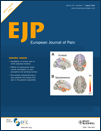Diverse sensory inputs permit priming in the acidic saline model of hyperalgesia
Funding sources
This study was funded by NIMH (MH43778). L.J. supported by Manitoba Graduate Scholarship – University of Manitoba.
Conflicts of interest:
There is no conflict of interest.
Abstract
Background
The rodent acidic saline model of hyperalgesia uses repeat injections of acidic saline in the right lateral gastrocnemius muscle, spaced five days apart, to induce a persistent decrease in hindpaw withdrawal thresholds. The objective of this study was to determine if alternate injection sites would permit development of hyperalgesia.
Methods
The location of the first muscle injection was varied between 3 groups of rats to include the right lateral gastrocnemius, the right medial gastrocnemius or the left lateral gastrocnemius. All second injections were placed in the right lateral gastrocnemius.
Results
As reported by others, placing both injections in the right lateral gastrocnemius produced a significant reduction in paw withdrawal thresholds 24 hours after the second injection (p < 0.05). Relocating the first injection to the right medial gastrocnemius or the left lateral gastrocnemius also produced significant reductions in paw withdrawal thresholds (p < 0.05 for both). Hyperalgesia was also observed if the first muscle injection was replaced with a systemic injection of lipopolysaccharide. Further experiments tested whether glia cells may contribute to the priming process. Pretreatment with minocycline prior to the first injection completely blocked the development of hyperalgesia but was ineffective if injected before the second injection.
Conclusions
These data indicate that anatomically diverse peripheral stimuli can converge within the central nervous system to produce hyperalgesia.




